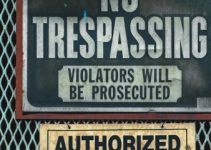Criminal Mischief Definition
Contents
- Criminal Mischief Definition
- 25 CFR § 11.410 – Criminal mischief.
- Elements of Criminal Mischief
- Misdemeanor Criminal Mischief
- Felony Criminal Mischief
- Texas Penal Code – PENAL § 28.03
- Common Defenses of Criminal Mischief
- FAQs About Criminal Mischief
- How serious is criminal mischief in Texas?
- What is considered criminal mischief in Texas?
- What is criminal mischief simple?
- What is criminal mischief 1st degree in Kentucky?
- What are some examples of mischief?
- What is a mischief case?
- What is mischief behavior?
- What are ways of mischief?
- What is the meaning of ‘mischief’?
- Can criminal mischief charges be dropped in Texas?
- Is criminal mischief a misdemeanor in Texas?
- How much is a bond for criminal mischief in Texas?
Criminal Mischief or Vandalism is a serious offense that can carry hefty consequences. It is the intentional and malicious destruction of another person’s property and can be punished as either a misdemeanor or a felony, depending on the value of the damage inflicted. If you have been accused of vandalism, you must be aware of the elements of criminal mischief, the different charge levels, and the common defenses available.
25 CFR § 11.410 – Criminal mischief.
Under § 11.410 Criminal mischief –
(a) A person is guilty of criminal mischief if he or she:
(1) Damages tangible property of another purposely, recklessly, or by negligence in the employment of fire, explosives, or other dangerous means; or
(2) Purposely or recklessly tampers with tangible property of another so as to endanger person or property; or
(3) Purposely or recklessly causes another to suffer pecuniary loss by deception or threat.
(b) Criminal mischief is a misdemeanor if the actor purposely causes pecuniary loss in excess of $100, or a petty misdemeanor if he or she purposely or recklessly causes pecuniary loss in excess of $25. Otherwise, criminal mischief is a violation.
Elements of Criminal Mischief
The criminal justice system takes a dim view of any crime involving destructive behavior. From graffiti to sabotage or even breakage and defacement, criminal mischief can take many forms. When it comes to conviction, though, the prosecution must prove several specific elements beyond a reasonable doubt. Let’s look at what the law requires for a successful conviction on criminal mischief charges.
Damage to Property
The first element that must be established is that the defendant damaged property. This can include physical damage such as breakage, vandalism, or graffiti, but it can also include other forms of damage that may not be immediately noticeable. For example, sabotaging an important piece of machinery could qualify as criminal mischief even if the damage itself was not visible.
Victim Owner of Damaged Property
The next thing the prosecution needs to establish for a successful conviction is that the alleged victim owned the damaged property. This means that if a defendant damaged a neighbor’s car, it cannot count as criminal mischief unless it is proven beyond a reasonable doubt that the neighbor owns the car.
Willful and Malicious Damage
Finally, the prosecution must prove the damage was both willful and malicious. That is to say; they must demonstrate that the defendant was fully aware of their actions and intended to cause harm or distress to them. Otherwise, the court may consider it accidental damage rather than criminal mischief.
Misdemeanor Criminal Mischief
Misdemeanor criminal mischief is damaging another person’s property without their consent. Depending on the total damage done, this act can be charged as a second-degree or first-degree misdemeanor. The severity of punishment for these offenses largely depends on the value of property damage caused by the perpetrator.
2nd Degree Misdemeanor Criminal Mischief
In cases that involve property damage valued at $200 or less, criminal mischief may be charged as a second-degree misdemeanor. Such misdemeanors can lead to up to sixty days in jail and fines up to $500.
1st Degree Misdemeanor Criminal Mischief
In instances involving property damages totaling between $200 to $1000, criminal mischief may be charged as a first-degree misdemeanor. Individuals convicted of such crimes face penalties, including up to one year in jail and fines not exceeding $1,000.
It is important to note that regardless of whether an act is labeled with a first or second-degree charge, criminal mischief is still a serious offense and can have substantial consequences. It is thus essential to abide by state laws and take responsibility for one’s actions to maintain justice and safety in our society.
Felony Criminal Mischief
Vandalism can have serious consequences, especially if it causes more than $1,000 in damages. In this case, the perpetrator may face criminal mischief charges at the third-degree felony level, with a potential punishment of up to five years in prison.
Legal Definition for Felony Criminal Mischief
Under the law, felony criminal mischief is intentionally damaging another person’s property without their consent. The severity of the crime and the resulting punishment depends upon the amount of damage caused. If the value of damages exceeds $1,000, the charge can be elevated to a felony.
Tackling Felony Criminal Mischief
When it comes to criminal mischief, prevention is key. Keeping an eye out on your property and reporting any suspicious activity can help reduce the chances of vandalism. Additionally, encouraging good behavior within the community, such as organizing activities and getting to know neighbors, will also help foster respect for shared spaces and prevent incidents from occurring.
Punishments for Felony Criminal Mischief
At the felony level, punishments are understandably more severe than misdemeanors. If convicted, perpetrators of felony criminal mischief may face jail time of up to five years and hefty fines. While this may seem harsh, penalties like these serve as a deterrent for others not to commit such crimes.
In summary, when it comes to felony criminal mischief, understanding the legal definition, taking steps to prevent it from happening, and enforcing strict punishments if it does can help ensure that people have respect for other people’s property.
Texas Penal Code – PENAL § 28.03
When it comes to property damage, the law is clear: intentional acts of criminal mischief in Texas are considered serious offenses. According to Texas Penal Code 28.03, criminal mischief refers to the willful vandalism or destruction of another person’s property, resulting in financial loss and inconvenience. By engaging in this behavior, perpetrators risk facing misdemeanor charges, but in more extreme instances, felony charges may apply.
Common Defenses of Criminal Mischief
Criminal mischief charges can be intimidating and difficult to defend against. Fortunately, there are a variety of defenses that experienced attorneys may be able to bring forth to challenge the charges. Here, we will discuss some of the most common criminal mischief defenses you should know.
Challenging the Alleged Victim’s Ownership
One defense approach challenges the alleged victim’s ownership of the damaged property. This means attempting to demonstrate that the property did not belong to the plaintiff and that they had no right to make the claim they did. If successful, this defense could potentially lead to an acquittal because the accused cannot be held accountable for damaging someone else’s property.
Questioning Causality
Another viable defense strategy is to question whether or not the damage in question was actually caused by the defendant’s conduct. This can also include questioning whether any damages even occurred at all. The prosecution must prove beyond a reasonable doubt that the accused was responsible for causing the damages to obtain a conviction.
Accidental vs. Intentional Damage
The intention behind the damage can play a major role when defending against criminal mischief charges. If it can be demonstrated that the damage in question was accidental rather than intentional, this could form the basis for a successful defense. In these cases, an attorney could attempt to demonstrate that their client lacked the wilful intent necessary for committing an act of criminal mischief.
Justification for Behavior
Finally, justification for the behavior may be raised as a defense tactic. In other words, if the accused can adequately explain why they engaged in the behavior, this could potentially reduce or mitigate any potential penalties that may result in a conviction.
Criminal mischief charges should not be taken lightly, and those facing such charges should consider consulting with an experienced criminal defense attorney. With knowledge of the various legal defenses available, your attorney can help you craft a compelling case and ensure that your rights are represented throughout all stages of your case.
FAQs About Criminal Mischief
How serious is criminal mischief in Texas?
Criminal mischief in Texas is considered a serious offense and may lead to severe legal consequences upon conviction. Depending on the severity of the offense, it can be charged as either a misdemeanor or a felony. If convicted, an offender could face jail time, fines, probation, restitution payments, and more.
What is considered criminal mischief in Texas?
In Texas, criminal mischief is defined as intentionally or knowingly damaging or destroying tangible property belonging to another without their consent. This includes defacing public or private property through graffiti, vandalism, or destruction of property.
What is criminal mischief simple?
Criminal mischief simple is defined as damaging, destroying, removing, or defacing any tangible property belonging to another without their consent. It is generally a misdemeanor offense. Despite this classification, offenders may still face stiff penalties if convicted.
What is criminal mischief 1st degree in Kentucky?
In Kentucky, a criminal mischief 1st degree is considered a Class D felony. It is defined as knowingly and unlawfully destroying or causing physical injury to any public communication facility, which includes phone lines or cable services. Convicted offenders may face up to 5 years imprisonment.
What are some examples of mischief?
Some common examples of criminal mischief include:
- graffiti, vandalism
- breaking windows
- tampering with fire alarms or security systems
- keying vehicles
- throwing objects at buildings or people
- and other forms of destruction of tangible property without the owner’s permission.
What is a mischief case?
A mischief case is a legal proceeding in which an individual is accused of committing criminal mischief according to state or federal laws. The individual will go before a judge and must plead guilty or not guilty for the charges to proceed.
What is mischief behavior?
Mischief behavior is any type of illegal behavior meant to damage another person’s property without their consent. This includes graffiti, vandalism, and other forms of destruction of tangible property.
What are ways of mischief?
Criminal mischief can take many forms including defacing public or private property through graffiti, vandalism, destruction of property, tampering with fire alarms or security systems, keying vehicles, throwing objects at buildings or people, and other forms of destruction of tangible property without the owner’s permission.
What is the meaning of ‘mischief’?
Mischief is defined as intentionally or knowingly damaging or destroying tangible property belonging to another without their consent.
Can criminal mischief charges be dropped in Texas?
In Texas, the decision to drop or reduce criminal mischief charges rests solely with the prosecutor assigned to the case based on their own discretion and evaluation of evidence. In cases where there is conflicting evidence or witnesses that contradict each other’s statements, a prosecutor may decide to drop the charges altogether.
Is criminal mischief a misdemeanor in Texas?
Yes, depending on the severity of the crime and the amount of damage caused by the offender’s actions, criminal mischief can be classified either as a misdemeanor or felony in Texas.
How much is a bond for criminal mischief in Texas?
The amount of bond set for an offender’s criminal mischief charge depends on several factors such as whether it’s a misdemeanor or felony charge and the extent of damage caused by the defendant’s actions. The average bond for this type of offense ranges from $500 – $3,000 depending on the individual circumstances.




